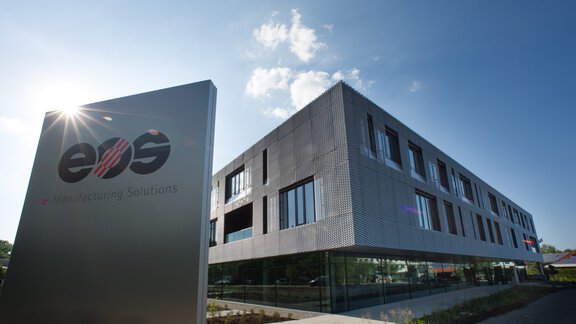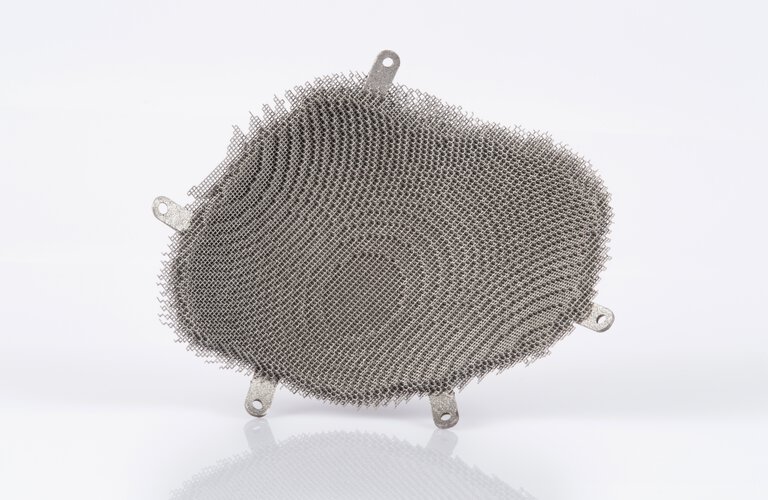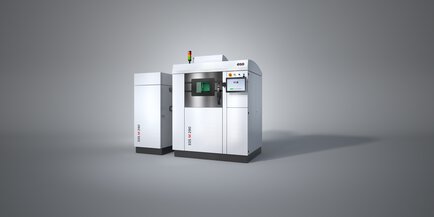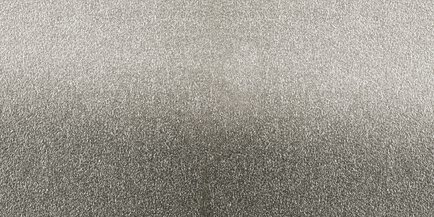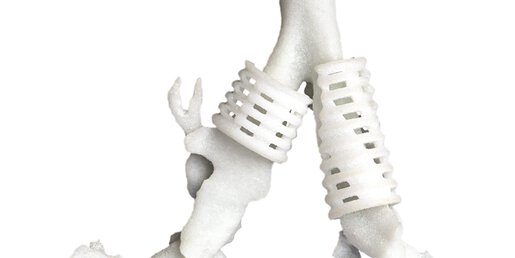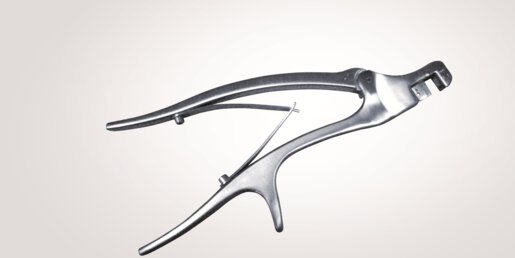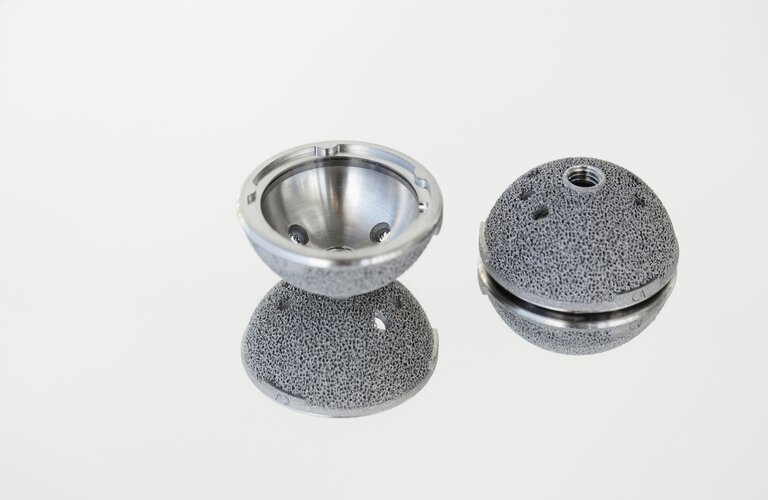Permeable for
liquids, protects against heat
Large-scale implant
despite porous structure
Lattice structures
support the attachment and in-growth of bone tissue
For us, additive manufacturing and EOS amount to the same thing. Both ourselves, and our customers are continually amazed by the application possibilities and the high-quality production that can be achieved using the EOS systems. That was once again the case here. We were able to help a person to live a normal life – on an ongoing basis – despite them having suffered a very serious injury.
Medical Product From Alphaform Offers Optimal Biomedical Characteristics for Patients
If a person requires an implant in the skull area then external factors should serve to aid rather than hinder the healing process.
The layering production process, which utilizes a laser to harden the material – in this case titanium - piece by piece, offers the maximum degree of individualization in terms of both form and size. For the actual production they used an EOSINT M 280 from EOS. The construction time was just a matter of hours.
The perfectly tailored implant meets the individual requirements of the specific clinical picture. The porosity level reached 95 % which means liquids could flow through with the least possible resistance. In addition, the bone tissue was able to penetrate the outer edges of the implant and grow together with it. At the same time, the material is stable enough to return the patient the desired level of normality in everyday life. The structure, constructed in the form of a regular lattice, also provided the desired level of thermal conductivity – so the patient can also enjoy time in the sun.
We have been manufacturing medical implants since 1995. Additive Manufacturing represents a new milestone for patients. It offers optimal biomedical characteristics together with the highest levels of compatibility, thereby having a lasting effect on the improvement of quality of life. For these reasons we have applied the technology with success to other areas of the body. Alphaform has also manufactured jaw implants for us, as well as a hip joint and a spinal implant. For spinal implants we are currently considering a combined series production using Additive Manufacturing.
